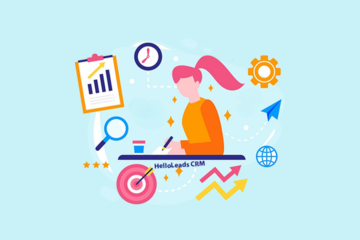
Website page loading speed is an essential aspect for ensuring positive user experience and optimal website performance. In today’s fast-paced digital world, users expect websites to load quickly and smoothly. A slow-loading website results in high bounce rates, low conversion rates, and reduced user engagement. In addition, search engines such as Google consider page loading speed as a ranking factor, which impacts your website’s visibility in search results.
Factors Affecting Website Page Loading Speed:
- Large images or videos
- Poorly optimized (insufficient or bulky) code
- Third-party plugins
- Uncompressed files
- Geographical distance between user and server location
To improve website performance and enhance user experience, it’s important to note that website page loading speed is increased, regularly monitored and optimized to provide the best possible user experience.
Below are the top 6 tactics to increase website page loading speed.
1 . Image Optimization:

Optimizing an image is the first step in improving the page loading speed. A large image size can significantly impact your website’s loading speed. Use image compression softwares (such as Adobe Photoshop, Squoosh, or Tiny PNG) to reduce size of image before uploading them. Then, to reduce file sizes and speed up loading times, provide images in next-generation formats like WebP or JPEG 2000 and provide the appropriate image file formats, such as JPEG for photographs and PNG for transparent background images.
Additionally, incorporate lazy loading, which loads images only when the user scrolls to them. This can make a page load faster at the beginning and give the user a good experience.
2 . Content Delivery Network (CDN):
A CDN is a network of servers that distribute website content to users based on their geographical location, resulting in faster loading times. If you’re looking to improve the loading speed of your website, consider using a CDN as part of a broader optimization strategy. The purpose of a CDN is to serve content to end-users with high availability and performance. CDN reduces the distance that data has to travel, and by serving content from a server that is geographically closer to the user. This significantly leads to a better user experience and improved search engine rankings, as search engines consider page loading speed as a ranking factor. In addition to improving website performance, CDNs also provide several benefits, such as improved reliability, increased security, and reduced stress on the origin server.
Here’s how a CDN works:
- CDN replicates the content of a website and stores it on servers located in multiple geographic locations
- CDN uses algorithms to determine the closest server to the user when a user requests a website, and serves the content
- CDN stores commonly used content, such as images and scripts, in cache
3 . Minimize HTTP Requests:
Minimizing HTTP requests is a critical factor in optimizing website performance, as the number of requests a page makes has a direct impact on its loading speed. Every time a page makes an HTTP request, it must wait for the server to respond before it continues loading. Therefore, the more requests a page makes, the longer it takes to load, and the slower the user experience.
Few steps to reduce the number of HTTP requests:
- Combine all the files instead of loading multiple CSS and JavaScript files
- Use CSS sprites by combining all images into a single image and CDN
- Minimize the use of images
- Compress images
4 . Enable Browser Caching:
Another efficient method to improve page loading speed is to enable browser caching. When the user visits a website their browser downloads and stores a copy of the website’s static content on their computer. This significantly reduces the loading time of the website on subsequent visits. To reduce the amount of data that needs to be transferred over the internet, you can utilise a caching plugin or add the relevant headers to your website’s .htaccess file.
5 . Minimize the use of plugins:
Although plugins are often used to add functionality to a website, they can also make it take longer for pages to load. Reducing the number of resources that need to be loaded on your website by using fewer plugins can improve the loading speed. Think about finding alternative solutions or utilizing only the most necessary plugins.
Below steps can be followed to minimize the use of plugins:
- Using plugins only when necessary
- Using lightweight plugins
- Keeping plugins up-to-date
- Deactivating and deleting unused plugins
- Optimizing plugin settings
6 . Use a fast web hosting service:

A fast and reliable web hosting service is crucial for website performance. Choose a hosting provider with a good reputation for speed and reliability, and consider upgrading to a faster plan as required. When choosing a web hosting service, some factors to be considered such as server location, server performance, uptime, reliable support and price with a good balance of features. Also, you can ensure that your website has the resources it needs to load quickly and perform optimally. This greatly improves the overall user experience for your website’s visitors.
In conclusion, website page loading speed is an important aspect of a website’s performance that can have a significant impact on user experience and engagement. Additionally, monitor and measure website performance regularly, and make updates and optimizations as needed.
Investing time and resources into improving your website’s page loading speed result in significant benefits, both for users and business. By providing a fast and responsive website, you can create a positive user experience and build customer loyalty and engagement.
Share this blog :










